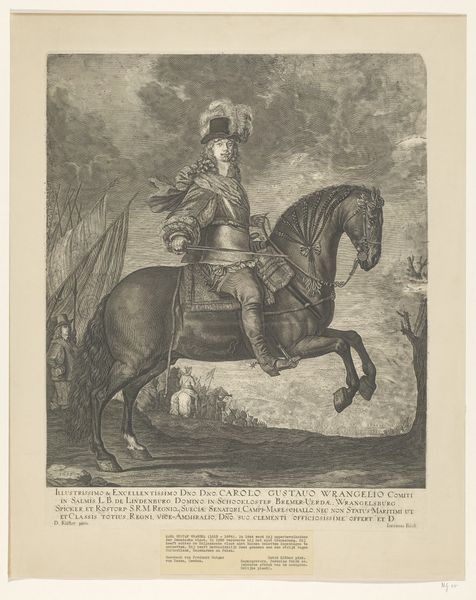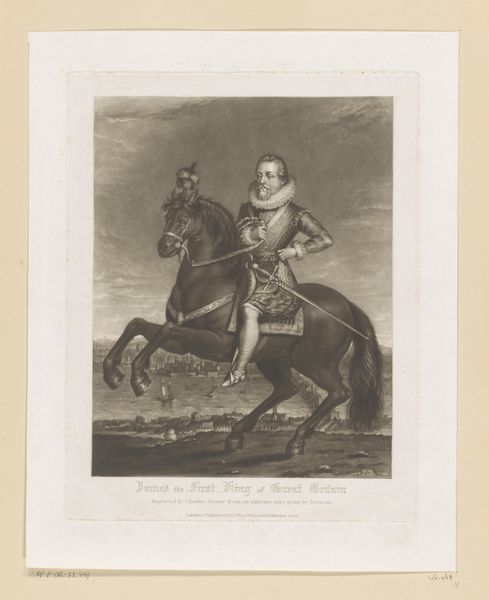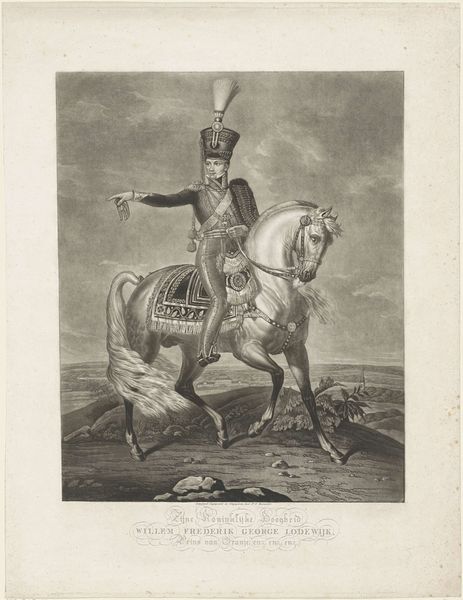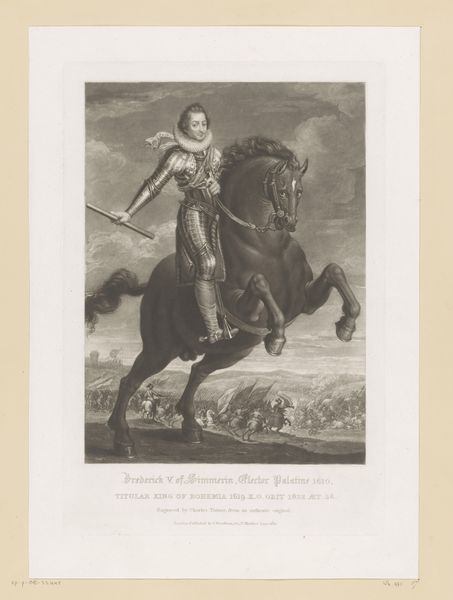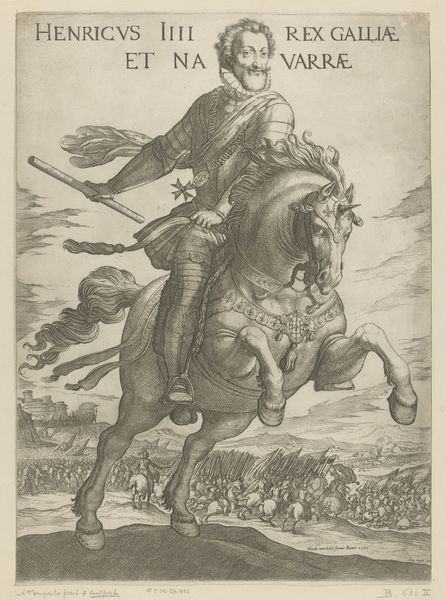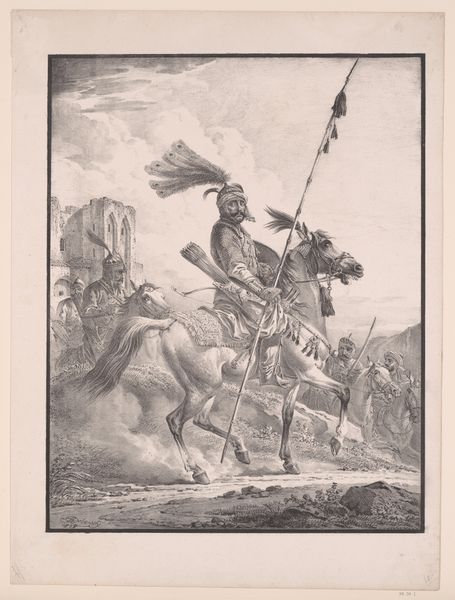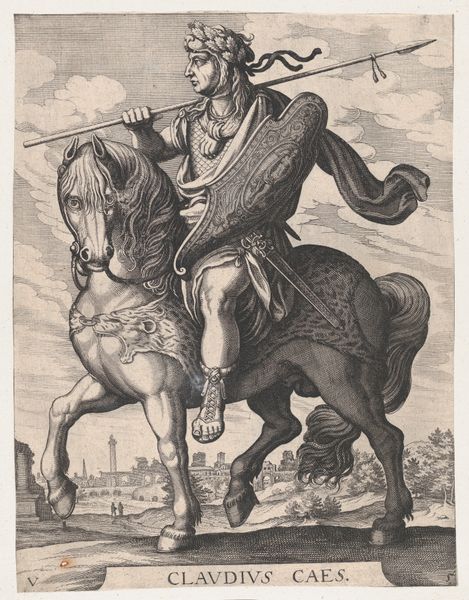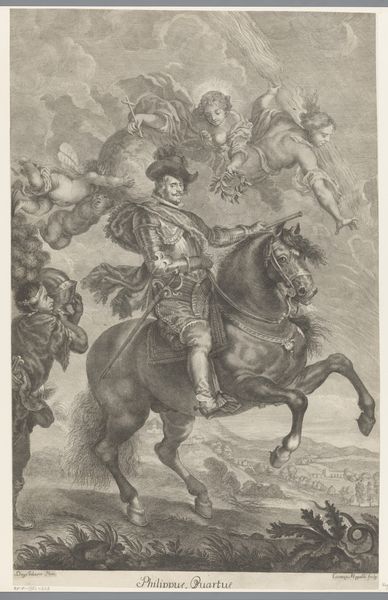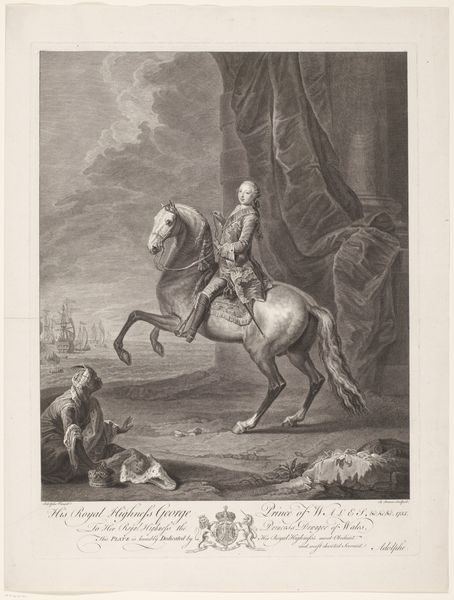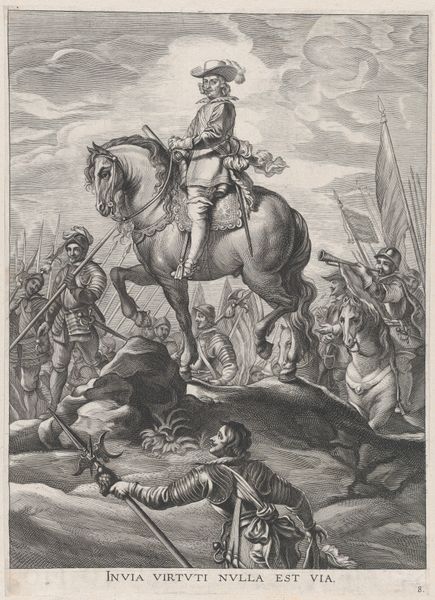
drawing, print, engraving
#
portrait
#
drawing
# print
#
landscape
#
charcoal drawing
#
pencil drawing
#
pencil work
#
history-painting
#
academic-art
#
engraving
#
realism
Dimensions: height 405 mm, width 254 mm
Copyright: Rijks Museum: Open Domain
Curator: Good morning. We’re standing before a piece attributed to Richard Earlom, titled “Ruiterportret van Karel V van Habsburg," created sometime between 1760 and 1822. It’s a drawing and print held within the Rijksmuseum’s collection. Editor: My initial impression is of classical formality. The monochromatic rendering coupled with the imposing figure on horseback evokes a sense of timeless power. Curator: Precisely. Note how Earlom employs engraving to meticulously capture details of Charles V’s armor and the horse's musculature. Semiotically, the crisp lines suggest an era of precision. But, is it more than just precise execution? Editor: From a socio-historical viewpoint, such equestrian portraits often functioned as assertions of authority. Consider how the artist chose to position Charles against the backdrop of both the sea and sky. Is this merely aesthetic, or might the maritime context allude to Charles V’s vast empire and its naval strength? The symbolic eagle in the top of the work is especially striking. Curator: Good points. The chiaroscuro lends an imposing character to the portrait. Also the composition seems almost divided; landscape at the bottom, figure in the middle, symbolic and expressive forms at the top, creating interesting lines and division, further enhanced through its varying tone and values. Do you agree that adds an extra layer? Editor: Indeed. Furthermore, observe the ship in the distance—a subtle nod perhaps, to maritime influence. Though such portraits reinforce power structures, they also reveal artistic strategies in constructing these perceptions for the viewing public. How effectively does the visual language translate into projecting the desired persona across centuries? Curator: An astute assessment. One may note the detail, form and lines as a means of not only technical artistry, but also a powerful strategy and visual rhetoric. Overall, it reflects a refined ability to harmonize historical depiction with elements of academic-art's approach, I suppose. Editor: Concluding, Earlom’s artwork delivers a powerful political statement as it intersects formal composition with historical representation.
Comments
No comments
Be the first to comment and join the conversation on the ultimate creative platform.
